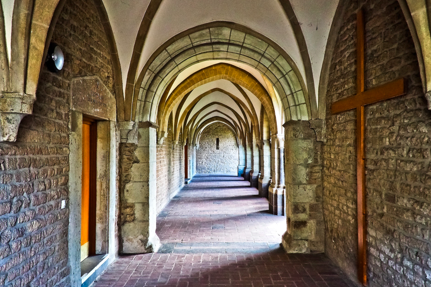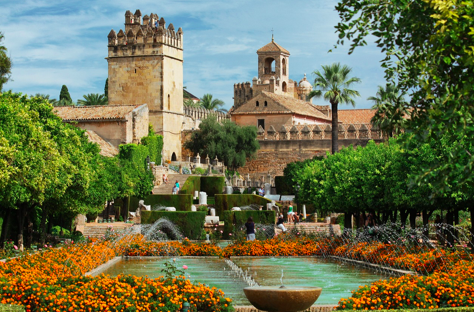In the last 35 years since the publication of Susan Bell’s pioneering article on, ‘Medieval Women Book Owners: Arbiters of Lay Piety and Ambassadors of Culture’ scholars have investigated the ways in which women across Europe interacted with books. This interdisciplinary research project, supervised by Dr Emily Wingfield and Dr Elizabeth L’Estrange, is encouraging two students to push the boundaries of existing research by investigating what historiography currently exists on this topic and the different pathways new areas of research can take. Claudia and Adnan discuss their experiences thus far, highlighting the directions their research is taking them.
Claudia Chiarenza
In the first week of my research, I have been looking at sources concerning women and books in Germany and Spain. The results have been really interesting. This research has shown women were not only readers, but also writers and scribes. In the Middle Ages, religious women had a greater access to written culture than laywomen. These women did not only read religious works but they also wrote original compositions. A few examples are The Book of Special Grace and Herald of Divine Love written collaboratively by an indeterminate number of nuns, in the Cistercian monastery of Helfta, in Saxony, and The Hortus deliciarum written by Herrad of Landsberg. An example of nuns as scribes can be seen in the Donenkron prayer books from Wienhausen. The nuns wrote these smaller books for their individual use. It is fascinating to think that these manuscripts could be evidence of the nun’s unauthorised devotional literature since, fourteen years after the reform of 1469, the Benedictine abbots visited the convent and stated that books of private prayers had to be examined and approved by them or their [male] adviser.
In Spain, in the late Middle Ages, the only recommended books for women were prayer books. However, one can see that women of the time also owned and wrote books that were not for religious uses. Some women wrote texts in which they expressed their own opinions. Such women did not follow what was considered a ‘good’ female education and wrote books that were not accepted by the Church. La ciudad de las Damas by Christine de Pizan is considered the starter of “la querella de las mujeres”, a cultural, political and social debate that stated the importance of women’s education and defended women’s intellectual abilities. Therefore women, despite the patriarchal societies they found themselves in wanting them to have a passive role in cultural life, tried to stand out and write their own literary works or devotional books.

Adnan Khan
Within the first three weeks of the project, I have focussed my research upon medieval Muslim and Jewish women’s writings around the Mediterranean. I have developed an annotated bibliography, detailing some of the most important works in the historiography across the Iberian Peninsula, Italy, the Levant and North Africa. From this research, I have found that comparing the development of women’s writings between these regions could be a new way of understanding this process as oppose to strictly national or religious lines. Therefore, I have drawn from my analysis on female book usage that different communities used books similarly in places like eleventh century Egypt, with high Muslim, Jewish and Christian populations, despite their religious differences.
In tenth century Iberia, I have found examples of exceptional women like Lubna of Cordoba. Lubna worked in Cordoba in the libraries of Caliph al-Hakam which contained over 400,000 books. Whilst also working as a poetess, Lubna was a copyist reproducing, like 127 other women in Cordoba, the Quran, the works of Aristotle as well as other texts found in the Caliph’s library. Lubna also taught boys and girls in Cordoba’s local schools and was described in Ibn-Bashkuwal’s twelfth century biographical dictionary as, “an intelligent writer, grammarian, poetess, knowledgeable in arithmetic, comprehensive in her learning; none in the palace was as noble as she.” Lubna rose to become Head of the Library and Private Secretary to the Caliph himself. Lubna was not the only woman to reach such heights in Cordoba. Fatima, who was Lubna’s contemporary, was tasked with travelling to the book markets of Syria, Iraq and Egypt to buy books for the Caliph’s library at a time when books were considered more precious than jewels. Therefore, despite the limited sources available, snapshots of active and significant Muslim women’s participation in book writing can be found in Europe in the medieval period.


